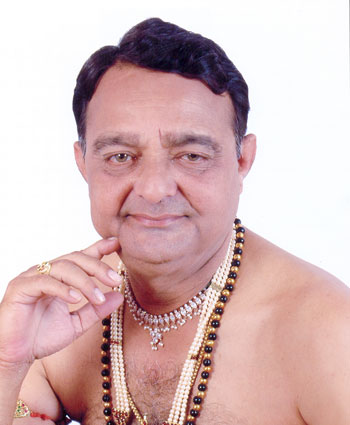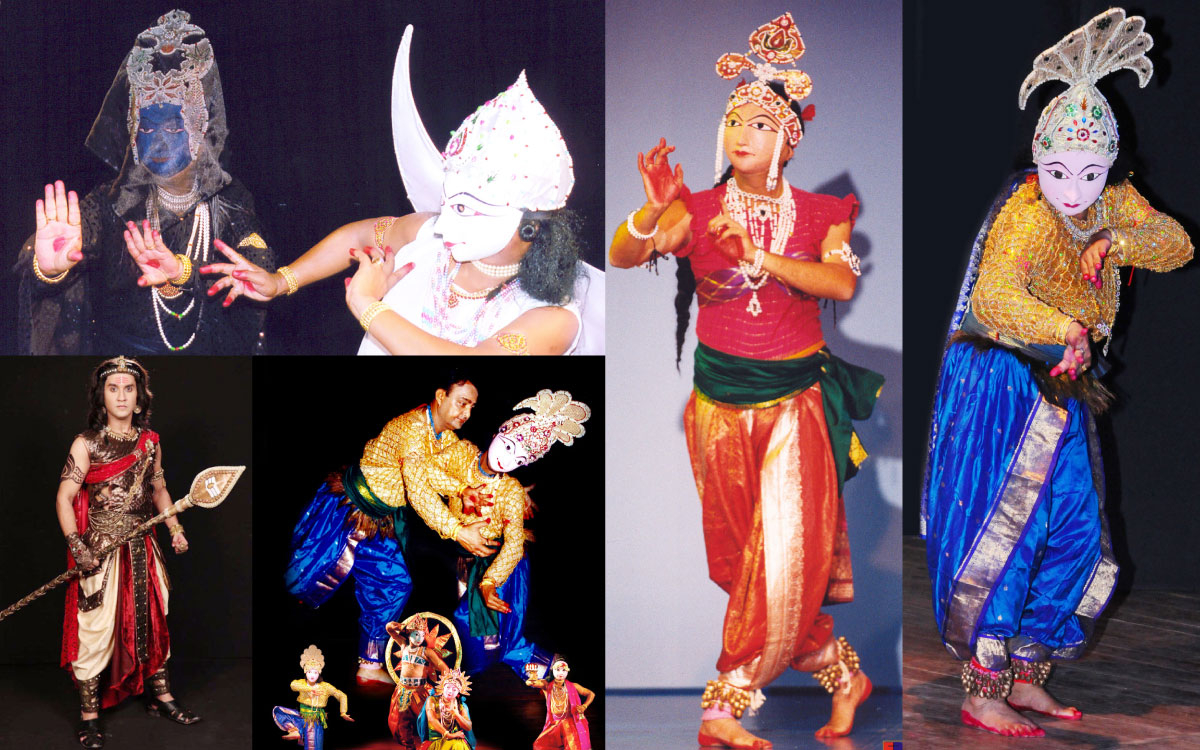Pandit Gopal Prasad Dubey “Receiving padmasree was the best moment of my life”
Acclaimed for his invaluable and outstanding contribution towards the promotion and propagation of Seraikella Chhau dance, Pandit Gopal Prasad Dubey is the proud recipient of the ‘Padmashri’. Veteran film maker Buddhadev Das Gupta has featured him in the documentary film of the Films Division. GP Dubey’s popular peacock dance will be featured in the documentary section of the forthcoming Berlin Film Festival. In an exclusive interview with VIJAY SHANKER, GP Dubey talks about his journey that started in a small town in Jharkhand and as to how he became a renowned exponent, choreographer and teacher.
 Your initiation to dance, is it your personal choice or hereditary?
Your initiation to dance, is it your personal choice or hereditary?
I was Born in Seraikella, a small town in Jharkhand which is better known for its stylized and sophisticated Chhau dance. My Grandfather the late Shashi Bhushan Dubey who initiated me to the dance form was an actor in the Royal court of Seraikella, at thetender age of 9 I started the formal dance training with lot of involvement and passion, enjoyed alot and decided to continue learning the Chhau dance.
Why did you choose Chhau dance and not any other dance style?
Because of the interest at the young age when I started and enjoyed to such an extent that I could not think of any other dance style, hence I would state that Chhau dance chose me and that’s how I became a professional dancer, nevertheless the environment and atmoshere of Chhau dance and music, lured me automatically.
What has been your family reaction, did they support you?
Yes off course my father always supported me and my family members are trained as dancers and musicians.
When did you decide to become a professional dancer and why?
From my younger age, My daily routine formed 6 to 7 hours for dance practice and there is no time for my higher studies , as I was completely involved in my dance practice, following the tradition and my Gurus path., hence started early as a professional dancer
What was your reaction when Chhau was recognised as a classical dance, do you feel that it has all the qualities of classical dance, please elaborate?
Yes Off course, I still remember there was a big Festival at Kolkata in 1977 organized by Anamika Kala Sangam, now they changed their organization name to Padatik Cultural centre, Founder Director Late Shri Shyamanand Jalan. At that time the great Scholars like Dr. Kapila Vatsyayan, Dr. Sunil Kothari, Late Smt. Sanjukta Panigrahi, Late Guru Kelucharan Mohapatra, Dr. Sonal Mansingh , Proff Richard Emmert and many well-known dancers and musicians explained that Chhau is a classical form because of the complex teachnique of “charis” ,” grihaveda,” “ Siroveda”, “Mandala”,” Mudras” and in music Rag Ragini and tala patterns similar to other classical forms. After the seminar they reconized Chhau as a classicaldance like other classical dances. With lot of struggle and finally Government declared Chhau as one of the classical dances of India.
How would you distinguish between Mayurbhanj, Purulia and Seraikella Chhau dance?
The word Chhau has a very Asian Flavour being derived from Sanskrit and literally it means a mask (Mukhosa), Chhau has three forms. Purulia and Mayurbhanj originate from Seraikella Chhau. Purulia Chhau first started by Guru Late Rajendra Pattanayak from Seraikella, and Mayurbhanj Chhau stated from Guru Late Banbali Das at Baripada Royal Court. The choreography pattern is different in both style. The main difference between Mayurbhanj Chhau and Purulia Chhau is as Mayurbhanj Chhau is not wearing masks during the performance.
Does wearing the mask enhance the appeal of the character or not?
Ans; The unique feature of Chhau dance is the elaborate costumes and specially the Masks. The mask depicts the quintessence of the particular mood and theme. When the mask is worn, the dancer losses the most potent of expression the face and so he has to depend on the body and its movements to project the moods and emotions. The body qualifies the basic dominant rasa that the mask mirrors. The use of the mask eliminates all the spoken words and facial expression. But as the dance proceeds the mask itself seems to assume a dynamic identity of its own. The Mask generally portrays the “SthayiBhavas” (Permanent Mental State). Thereby lot of emphasis is given to the bodily movements and a language of the distinct and characteristic movements, for instance if it is the Peacock dance, the dancer has to move like the Pecock and dance like the Peacock which is not an easy task, Hence your dance will reflect on the devotion and training that you have attained over the years
Lately, Chhau dance has become quite popular, what is the reason?
Because Chhau is a unique Classical Dance form, the movement characteristics are different from other Indian Classical dances. Legs are often stretched out to take long and distinct steps, the torso twist and turn is bold and startling fashion, the hip is suddenly twisted before a sudden jump, it demands a finely tuned sense of balance which the dancer has to maintian consistently, which is possible only after strenous training and practise.
Do you find any changes in the style and technique of the presentation, over the years?
Ans: No My aim is to continue and preserve this art form without changing . But at present people are mixing other dance styles. We can say they will use Chhau with other dance forms like contemporary dance or folk dance for that matter.
Your experience as an exponent and teacher both in India and abroad?
Well as a teacher, I have been responsible for grooming some of the highly talented Chhau dancers of the present time. As a Choreographer, I have created a number of well-known dance dramas and solo pieces. I also worked with mainstream cinema as well as experimental theatre and films. My choreographic works includes two dance Ballets for television “JeevanRekha” and “Dharma Chakra”. I choreographed and performed in the Chhau tradition in TV serials like Shyam Bengal’s “Bharat Ek Khonj” RamanandSagar’s “Uttar Ramayan” and Amul Palekar’s “Mirganayani”and the NFDC flim “The last vision” directed by A.K.Bir.
I choreographed in theatre includes among other, the Sangeet Natak Academy award winner “AndhaYug” directed by Prof. Mohan Maharishi, “Antigone” for Award theatre, New Delhi, “Sakunthalam” for Volovs theatre, Greece, “Death Watch” directed by Kumar Varma, The “Golden Leaves” for Multicultural Centre of Inchon city, South Korea. “Mud Man” for Ten years later theatre group, South Korea. I have collaborated with Mr. Henry Smith of Solaris, New York for the Multicultual dance production “Dance of the Warriors”
Most memorable experience in life?
The moment when I received the 4th highest Civilian award ‘Padmashri’ for the contribution to the Chhau tradition.


